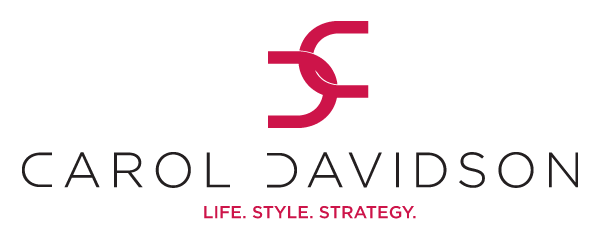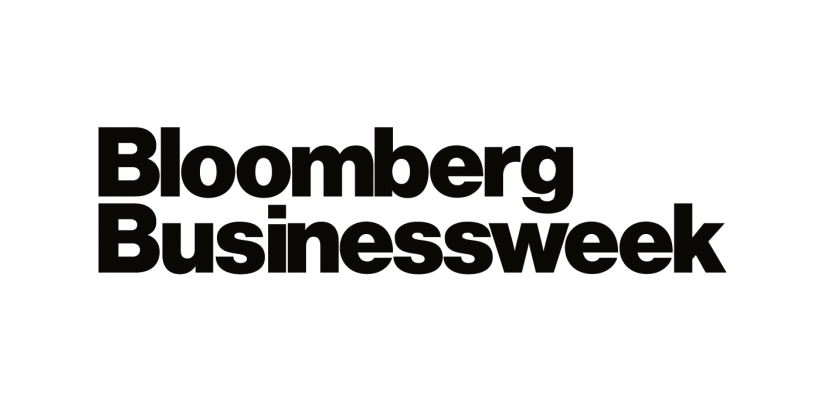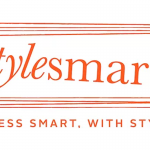BusinessWeek Style Q&A 2011

 BusinessWeek December 9, 2011
BusinessWeek December 9, 2011
Q: I have a small budget for client gifts. Should I skip it this year?
A: Regardless of your budget or the economy, now is not the time to neglect your best clients. Show your appreciation without breaking the bank by taking your client out for a festive holiday breakfast instead of lunch or dinner. Or send a candy assortment or food basket the client can share with the team. Making a donation to your client’s favorite charity in his or her name includes the client in the altruistic spirit of the holiday. Since the donation amount will not be announced, you can manage your costs.
BusinessWeek November 18, 2011
Q: Do you have any tips for wearing colored or patterned tights to the office?
A: While highly trendy, wearing bright or excessively patterned tights carries risk in many office environments. Err on the side of subtlety by choosing tights in black, navy, brown, or gray. For a more conservative look, keep the color of your tights and shoes in the same hue. In less formal or more creative environments, darker accent colors, such as burgundy, plum, or teal, may also be appropriate. If you want to add a bit more visual interest, choose neutral colors in a classic menswear-inspired pattern, such as a pinstripe or herringbone. If you decide to wear snazzier tights, pair them with a tall boot or long skirt, as less will be on display. In business, you want to keep the attention close to your face, so remember the blink test. While standing in front of a full-length mirror, close your eyes and then open them. If you see your tights before you see the rest of your ensemble, save them for evenings or weekends.
BusinessWeek November 4, 2011
Q: What color nail polish is right for work?
A: The more conservative your office wardrobe, the more conservative your nail color should be. You can never go wrong with a nude, light, or subtle color. In many work environments darker colors such as a brick red, wine, or plum may also be acceptable, particularly in the winter months. While nail color in shades of gray, dark blue, and black are on-trend this season, they are often perceived as too “Goth” and are generally frowned upon in the workplace. Ditto for shades of silver, gold, and anything that sparkles; save them for a night on the town.
BusinessWeek October 21, 2011
Q: When should I call instead of sending an e-mail?
A: Reach out by phone or in person if you need to send an upsetting or confrontational message. If the topic is complicated and requires a good deal of explaining, save it for live conversation. Because the tone of an e-mail can easily be misconstrued, leave your note in draft for 24 hours when in doubt and then reread it before hitting the send button. And remember: Although the act of sending an e-mail is immediate, the response may not be; if you require an instant reply, pick up the phone. Finally, if you need to apologize, do it face to face.
BusinessWeek October 7, 2011
Q: We’re allowed to wear jeans to the office. How can I make them look more professional?
A: Stick to a uniform dark blue and avoid fading, whisker, or acid washes. As a general rule, the fewer the pockets, the more professional a jean appears. Choose a trouser, bootleg, or straight leg with a respectful (mid-rise) waist. Save the skinny, boyfriend, or ultra low-rise cuts for the weekend. Make sure your jeans are clean and well-pressed, sans rips or frayed bottoms. What you pair your jean with is as important as the jean itself. To step up your look, add a blazer or collared shirt with office-appropriate accessories.
BusinessWeek September 23, 2011
Q: I occasionally brainstorm ideas with a co-worker, but he recently presented one of mine as his own. How do I handle this?
A: First, be certain that you made it clear that the idea in question was yours and one you intended to present. If you did not, assume that your co-worker genuinely did not remember how the idea came to him, and let it go. If, however, you are certain of the impropriety, approach your co-worker in a nonconfrontational manner. Let him know that you believe the idea was originally yours and that he may have unintentionally presented it as his own. If he is open, see how you can work together to rectify the situation. Regardless, be sure to build on the idea and make your contributions known to others. While you may not receive credit for the initial concept, colleagues will remember your role as a team player and strategic thinker. To avoid a similar predicament in the future, share your ideas in a group setting, rather than with just one person. In addition, take the initiative to schedule a short meeting with your manager to share your most viable ideas.
BusinessWeek September 9, 2011
Q: When you send a confidential e-mail to the wrong person, what’s the best way to handle it?
A: Assume that your e-mail was read and call the recipient right away. Apologize for your error and request that he or she delete the e-mail because it was intended for another person. If the contents of the errant e-mail message could put your employer or you in jeopardy, immediately contact your company’s legal department. To prevent such mistakes, never add the recipient’s e-mail address until after you’ve finished composing your message. Type out the recipient’s entire name instead of hitting just the first few letters and relying on auto-fill. Make it a habit to double-check the address box before you hit “Send.”
BusinessWeek August 26, 2011
Q: My food keeps disappearing from the company refrigerator. How can I address my coworkers without being rude?
A: When you notice a small amount of food or drink missing for the first time, ignore it and assume a coworker took it by accident. If, however, it happens a second time, begin to label your items with your name. Because people are less likely to help themselves to things they have to hunt for, store your edibles in the back of the refrigerator or in a drawer. You might also make your items harder to get at by placing them in double-knotted plastic bags. If your food still continues to go missing, ask the office manager to address the problem.
BusinessWeek August 5, 2011
Q: What’s the proper etiquette for exchanging business cards?
A: When receiving a business card, look at it for a few seconds, make a comment on the design or information (if appropriate), and place it reverently in your pocket or card case. When speaking with someone, jot down a note or two on the back of his or her card to jog your memory later. Have different pockets for incoming and outgoing business cards, so you don’t accidently hand out someone else’s card. Make sure your cards are clean, unbent, and unripped, as they are a reflection of you and your company.
BusinessWeek July 29, 2011
Q: How early should you arrive for an interview?
A: Although you should never be late under any circumstance, it’s a bad idea to arrive excessively early. Aim to get to an interview about 15 minutes prior to your meeting time. Showing up well before your allotted time slot can make the interviewer feel compelled to move his or her schedule around. Arriving 15 minutes early shows that you are punctual yet have respect for other people’s time and work.
BusinessWeek July 15, 2011
Q: How can I make capri pants look more professional?
A: Opt for a tailored cut and also a longer hemline, as pants that end near the knee all too often resemble shorts. If your office is very casual, linen is acceptable. For a more conservative environment, choose crisp cotton, silk, or wool. In general, the fewer the number of pockets, the more formal the pant looks. Dress up your capris with a nice button-down, blouse, or casual jacket. Wear a small heel and tasteful jewelry. Remember to press or iron your capris for a more polished appearance.
BusinessWeek July 1, 2011
Q: I share an office with someone who’s messy, and I fear it makes us both look bad. What can I do?
A: Unfortunately, you will be perceived as a contributing factor because you share the space. Since the appearance and organization of your office sends a message to others about how you handle the details of your work, it is best to nip this situation in the bud. Rather than send an e-mail or leave a note, speak directly to your office mate. Be careful not to assign blame. Just state the facts that the office looks messy and that you think it reflects poorly on the both of you. Suggest a cleaning schedule you both can live with. If need be, offer to help your office mate with an initial cleanup. Lead by example and keep your area and any common space as neat and clean as possible. Escalate the matter to a boss or supervisor only if absolutely necessary.
BusinessWeek June 17, 2011
Q: No matter how carefully I pack, my clothes always get wrinkled. Any advice?
A: If you find an article of clothing is wrinkled when you arrive at your hotel, run a hot shower and hang the item close by. The steam from the shower will naturally press your garment. Wrinkle-resistant sprays are also helpful and convenient, as they are small enough to stash in a purse or briefcase. If all else fails, try asking the concierge. Some hotels offer pressing services, while others supply the room with an iron and board.
BusinessWeek June 3, 2011
Q: How can I avoid wrinkles in my clothes when I pack for business trips?
A: Both an overstuffed suitcase and one with too much empty space will lead to wrinkles, so pack lightly but tightly. Place heavy items (shoes, toiletries, etc.) on the bottom so they don’t shift, crush, and wrinkle your clothing. Shirts, skirts, and pants can be folded, stacked, and packed in the center of your suitcase. By putting tissue paper in between layers, you will reduce friction and wrinkles. Knits and more casual items (T-shirts, polo shirts, jeans, etc.) as well as pajamas should be rolled and placed around the sides of your suitcase. On top, place face down any items on hangers. Leave them in plastic dry cleaning bags to reduce creases. Look for travel-friendly items (folders, cubes, compressors, etc.) designed to make packing more organized and wrinkle-free.
BusinessWeek May 20, 2011
Q: Can I wear sleeveless tops to work in the summer?
A: This question comes up nearly every time I give a corporate presentation on image and style. If your company is conservative in general or has a traditional business dress code (i.e., suits, jackets), wearing sleeveless clothing—without a jacket or cardigan—is inappropriate. In a business casual setting, the answer is not so clear-cut. In the absence of a formal dress code, err on the side of caution and ask your manager or HR person. Exposed skin sends a less business-like message, so also consider the nature of your work. Do you have a client-facing role or is your work primarily behind the scenes? If you do decide to go sleeveless, avoid tank tops, halters, and camisoles. Instead, opt for a sleeveless style with more coverage and a modest neckline. Finally, make sure you have a jacket or cardigan at the office, in case you’re called into an unexpected meeting.
BusinessWeek May 6, 2011
Q: Can I wear my favorite pair of 4-inch heels to the office?
A: Generally speaking, heels higher than 3 inches are perceived as more suitable for a dance club than an office environment, especially shoes with thin straps that expose more of the foot, as well as shoes with very thin heels. Ditto for footwear in bright colors. If you decide to go higher than a 3-inch heel, opt for a classic, closed-toe pump in a matte leather and neutral color. You might also consider a platform style or wearing pants the same color as your shoes to camouflage the height of the heel.
BusinessWeek April 15, 2011
Q: I love all the bright colors they are showing for spring. Are they office appropriate?
A: No one can deny the merits of neutral-colored business attire, but sometimes we all need a color pick-me-up. This spring, designers are showing citrus shades of orange, yellow, and green as well as coral, pink, and bright blue. Because people perceive brighter hues as bold and playful statements, for a more conservative work environment, less is more. Add brighter colors in small doses by way of a scarf, tie, or handbag. Or you can incorporate more hues in a patterned shirt or blouse and team it with a neutral bottom or jacket. Generally speaking, for business, you will want to avoid wearing bright colors from head to toe
BusinessWeek April 1, 2011
Q: I frequently respond to business e-mails via my mobile device. Must I include a salutation?
A: The type of device you use to send e-mail has little to do with proper e-mail etiquette. Instead, consider your relationship to the recipient, the intended degree of formality, and whether your message is a standalone reply or part of a longer chain of responses. On a first reply when communicating for business, use a salutation that includes the recipient’s name, whether it’s “Dear Christine,” “Hi, Christine,” or simply “Christine.” While a salutation is unnecessary thereafter, it is considered more formal and appropriate when communicating with a senior associate or an important client
BusinessWeek March 18, 2011
Q: I will be attending several upcoming job fairs. What do I wear?
A: Think of a job fair as a series of mini first interviews. Because the dress code of participating companies can vary, it is safest to err on the side of more formal dress. A suit or jacket in dark grey or navy (or black for women) is always an appropriate choice. Wearing a collared, long-sleeve shirt or blouse underneath makes sense because it looks professional enough on its own, should you decide to remove your jacket. Men should opt for a dark-colored, lace-up shoe; for women, a mid-heeled, closed-toe pump or slingback. Clean and pressed clothes and polished shoes are a must. Less is more with accessories, jewelry, and cologne, so keep them at a minimum. These tips, accompanied by a smile, direct eye contact, and a firm handshake, will help you create a positive—and professional—first impression.
BusinessWeek March 4, 2011
Q: I am uncomfortable attending networking events. Can you help with some conversation starters?
A: To ease your way, arrive with a handful of open-ended questions. A logical place to start is by asking others what they do. Follow up with additional questions such as what they like about their job, current projects they are working on, industry trends they have noticed, or challenges they are facing. Remember, everyone is there for a similar reason. Be sure to ask others about the type of referrals that are useful to them and how you can help. Presumably other networkers will want to know your answers to similar questions, so make sure that you come prepared. Use current events to your advantage. Select one for discussion and ask others to share their thoughts. Avoid controversial subjects such as politics and religion. If you are truly at a loss for words, you can always start with questions such as: “What brings you to this event?” or “What have you heard about the speaker?” Follow up with your new key contacts in a timely manner. Don’t forget to mention the event at which you met and what you discussed.
BusinessWeek February 18, 2011
Q: I look young and fear that I am not taken seriously at work. What can I do to project a more-seasoned image?
A: Seemingly small changes to your appearance, body language, and speech can make a big difference in how others perceive you. To convey a more mature and credible image, opt for high quality, classic clothing in solid, neutral colors or simple patterns. Depending on your workplace dress code, wearing a formal suit can look as if you’re trying too hard. However, the addition of a jacket, cardigan, vest, or other “third piece” to a shirt-skirt or shirt-pants combination will add a visual layer of authority and credibility. Don’t overlook your hair and makeup: Aim for subtle and sophisticated. Your body language and speech should be in synch with your visual image and in support of your overall message. Pay attention to your posture and maintain eye contact with others. In addition, speak slowly and with conviction. Demonstrate your maturity and experience with an awareness of industry and current events.
BusinessWeek February 6, 2011
Q: I love big, expressive jewelry. Can I wear it to the office?
A: It depends. While dressing for work should not mean forgoing your own sense of style, your accessories should suit your industry, company, and position. Think about the type of clothing that would be office-appropriate for your environment and mirror that level of formality with your jewelry choices. When accessorizing, aim to create one focal point of interest. For most people this means directing attention to the face with an interesting necklace, pair of earrings, scarf, or tie. When you do choose a bold piece, keep your other accessories understated. If you have doubts about a particular accessory, try the “blink test.” Stand in front of a full-length mirror and close your eyes for a few seconds. When you open them, what is the first thing you notice? If it’s the accessory rather than your face or overall appearance, it’s probably too distracting for the office.
BusinessWeek January 21, 2011
Q: How can I maintain a professional look yet still dress for the inclement winter weather?
A. Dress in layers and pay attention to your fabric and color choices. Start with an undershirt of cotton, silk, or one of the new high-tech fabrics. Then put on your shirt or turtleneck. Over that, layer a thin-gauge, high-quality cotton, wool, or cashmere sweater. Avoid fleece, chunky, or Fair Isle knits, which have a more casual look and feel. Make sure to check for pilling, fading, and any other tell-tale signs that your cold-weather wardrobe staples need replacing. Save the short, brightly colored down ski jacket for the slopes. Opt for a neutral-colored wool coat that is 3/4-length or longer to layer easily over a blazer or longer cardigan. Choose hats, scarves, and gloves without excessive detail or embellishment. Fringes, pom-poms, and furry earmuffs are more suited for the weekend. Invest in a professional-looking, all-weather boot in a neutral color. If your boots are brightly colored, patterned, or Ugg-styled, swap them for a more business-appropriate shoe when you arrive at the office.
BusinessWeek January 7, 2011
Q: How can I keep my New Year’s resolution to stick to my diet when eating out with clients?
A: Select a restaurant with a varied menu to suit everyone’s needs—not just your diet goals. Then try to be discreet about your calorie counting so you don’t inhibit the choices of others. If possible, meet for lunch instead of dinner as the portions are smaller. For an appetizer, opt for a salad with dressing on the side. Order your entrée grilled, steamed, roasted, baked, or sautéed, rather than breaded or fried. Since most restaurant food comes adequately salted, use the salt shaker sparingly, if at all. Drink plenty of water throughout your meal. For dessert, ask for fresh fruit. Alternatively, order a few desserts with extra forks for the table so that the experience (and the calories) can be shared.




